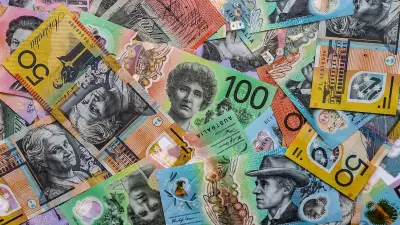
In an unexpected culinary revolution, MasterChef Australia has accidentally created a nation of choux pastry experts, transforming home cooking standards across the country. Current judge and season four winner Andy Allen has witnessed this remarkable evolution firsthand, from his humble beginnings to becoming the only former contestant to earn a Chef's Hat.
From Sizzler to Stardom
Andy Allen's journey epitomises the MasterChef effect. At 21, his parents took him to Sizzler for his birthday, reflecting his country NSW upbringing where fine dining opportunities were limited. Just three years later, he won MasterChef Australia's fourth season, then achieved the prestigious Chef's Hat for his restaurant Three Blue Ducks, and ultimately returned to the show as a judge.
This unique perspective allows Allen to observe how the hit series has fundamentally changed Australia's food landscape, both in professional kitchens and family homes. The transformation in technical skills has been particularly dramatic.
The Croquembouche Revolution
The choux pastry phenomenon began with Adriano Zumbo's infamous croquembouche challenge during season one. Australian patissier Zumbo presented the elaborate dessert tower as the "hardest dish to master" in a pressure test, with promotional material setting incredibly high expectations.
"Poh did it, and she said she still had scars from burning her fingers on the hot toffee," Allen recalls. However, when Zumbo returned for Sweet Week several seasons later, contestants faced recreating the croquembouche without any recipe guidance.
"You should have seen it - everyone smashed it," Allen says enthusiastically. "There were a couple of disasters, but the choux element itself, like no one would have known how to make choux element back [during the first season], whereas now, you see choux pastry belted out by nearly every contestant that walks through those doors."
Allen notes that choux pastry has become such an essential skill that modern contestants know they must master it before entering the competition kitchen.
Elevating Australia's Cooking Standards
MasterChef has always balanced accessible home recipes with complex restaurant-style dishes, but the knowledge of Australian home cooks has improved dramatically alongside the show's evolution. Dishes that featured in early seasons would likely need significant refinement or replacement if proposed today.
This progression explains why when Alvin Quah returned in season 14, he presented an upgraded Drunken Chicken 2.0, reflecting how the original version from season two had already inspired a national Shaoxing wine shortage as Australians enthusiastically recreated it.
The newly released MasterChef at Home cookbook captures this culinary journey, featuring over 100 recipes from the MasterChef kitchen. The collection answers the most common question Allen receives: what do these dishes actually taste like?
For Allen, cultural dishes like Amina Elshafei's beef bulgogi cups from season 12 and Juan De La Cruz Torales Villarreal's beef empanadas from series 16 particularly stand out. His own MasterChef experience first exposed him to international cuisines and traditional cooking techniques, sparking his passion for absorbing diverse flavour combinations.
Now as a judge, Allen champions cultural dishes and flavour-focused cooking. "I feel like the thing that I'm really proud about is just that the food has so much flavour," he explains. "When I stepped into the role, I really wanted to celebrate those cultural dishes as much as we possibly could and just have things that are purely about deliciousness."
He acknowledges the challenge for viewers who can't taste the food, making visual presentation important, but emphasizes that flavour remains paramount. Allen takes seriously his responsibility to create satisfying moments for both contestants and audience while encouraging emotional connection to the food.
The MasterChef at Home cookbook, published by Macmillan Australia at $49.99, represents the culmination of this culinary education revolution that began with a single croquembouche and created a nation of confident bakers and cooks.





